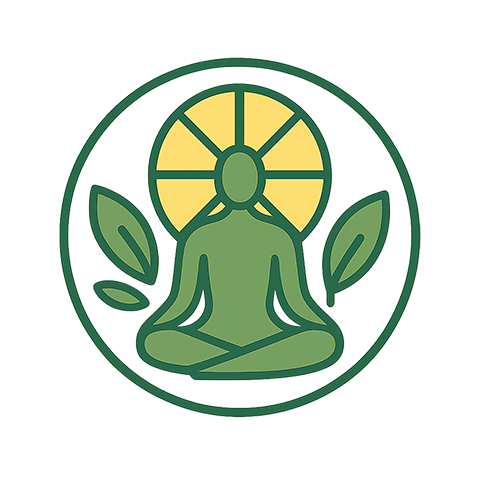When the buzz of a phone notification interrupts the stillness of a quiet afternoon, many of us feel a subtle, almost invisible pressure to respond. In our hyperconnected society, the line between digital engagement and personal well‑being is increasingly blurred. The modern life of endless scrolling, constant updates, and endless connectivity can feel crushing, leaving us drained and detached from the simple joys that make human experience rich. This article explores the gentle art of digital detox—a path toward reclaiming calm and connecting with ourselves and others in a world that often feels overrun by technology.
The Crushing Impact of Constant Connectivity
While smartphones and tablets have brought unprecedented convenience, they also bring a relentless flow of information. Studies show that the average adult spends nearly two hours daily on social media alone. This nonstop exposure can create a psychological cycle where the brain seeks the dopamine spikes that come from new content, making it difficult to focus on tasks that don’t deliver immediate reward. Over time, this constant stimulation can feel crushing, eroding our patience, deepening anxiety, and weakening our capacity for sustained attention.
- Attention Fragmentation: Rapid task switching reduces productivity and can lead to mental fatigue.
- Social Comparison: Seeing curated highlights from others’ lives can create feelings of inadequacy or envy.
- Sleep Disruption: Exposure to blue light before bed interrupts circadian rhythms, affecting rest.
Signs You’re Overloaded
If you find yourself checking your phone first thing in the morning, feeling irritated by constant notifications, or unable to sit still without the urge to scroll, you might be experiencing a crushing overload. A few subtle clues include:
“I can’t enjoy a conversation because I’m always half‑thinking about what I’ll post later.”
- Persistent urge to confirm the device is on.
- Difficulty concentrating on tasks that don’t offer instant feedback.
- Feeling a sense of guilt when you do not respond immediately.
Benefits of a Digital Detox
Stepping back from constant digital input can bring a range of benefits. A well‑timed digital detox can feel like a breath of fresh air, allowing you to reconnect with your environment, thoughts, and relationships. The following benefits are frequently reported by people who take a break from the digital realm:
- Improved Focus: Reduced distractions lead to deeper engagement with tasks.
- Better Sleep: Eliminating screen exposure before bedtime can enhance sleep quality.
- Reduced Anxiety: Less exposure to news and social media can lower stress.
- Enhanced Creativity: Quiet time allows ideas to surface organically.
Steps to a Gentle Detach
For those looking to start a digital detox, the process can be gradual and non‑disruptive. By following these steps, you can ease into a healthier relationship with technology without feeling like you’re missing out.
- Set Clear Boundaries: Choose a specific time each day—perhaps during meals or the first hour after waking—when you’ll keep devices off.
- Use Do‑Not‑Disturb Mode: Activate this feature to silence non‑urgent notifications while allowing important calls to ring.
- Swap Screen Time for Activities: Replace scrolling with a book, a walk, or a hobby that doesn’t involve screens.
- Reflect Daily: Spend a few minutes journaling about how the detox felt and what changes you notice.
- Gradually Increase Duration: If the initial period feels manageable, extend the detox window by 30 minutes each week.
Long‑Term Strategies for Sustainable Balance
Digital detox is not a one‑off event but an ongoing practice. To keep technology from becoming crushing again, consider these long‑term habits:
- Designate Tech‑Free Zones: Keep phones out of bedrooms, dining rooms, or meeting spaces.
- Schedule “Screen Sprints”: Set a timer for 20–30 minutes of focused usage, then take a break.
- Engage in Mindful Use: Ask yourself what you’re doing and why before opening an app.
- Prioritize Human Connection: Plan regular in‑person or voice‑only conversations without devices.
- Seek Nature: Time spent outdoors can reinforce a sense of presence and reduce the urge to check phones.
Reclaiming the Human Experience
When we pause the constant stream of digital input, the world feels more expansive. Conversations become richer, sensations more vivid, and our own thoughts clearer. The digital detox can act as a reset button, allowing us to re‑discover what makes our lives meaningful beyond likes, shares, and notifications. In essence, it encourages a softer, more deliberate approach to living—a gentle reminder that our humanity can flourish even in a technologically driven era.
Conclusion
The tug of modern technology can feel crushing, but the choice to step back is a powerful act of self‑care. By setting boundaries, embracing mindfulness, and giving space to the quieter moments of life, we can restore balance and reconnect with the genuine human experiences that technology often obscures. Remember, a digital detox isn’t about eliminating technology altogether; it’s about reclaiming control, reducing overwhelm, and nourishing the parts of ourselves that thrive in presence and stillness.




